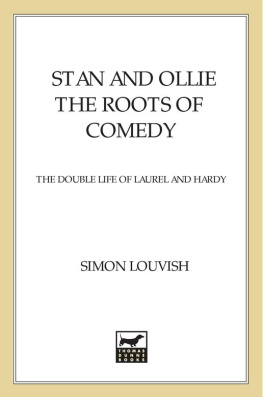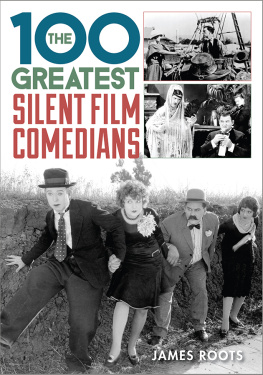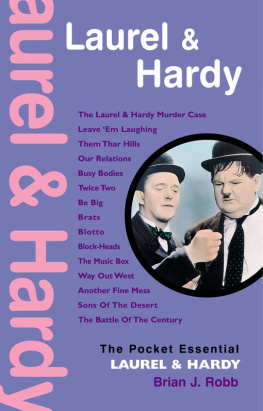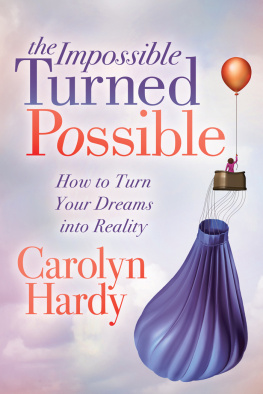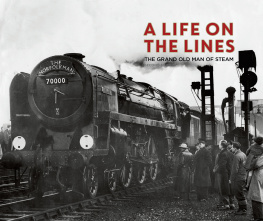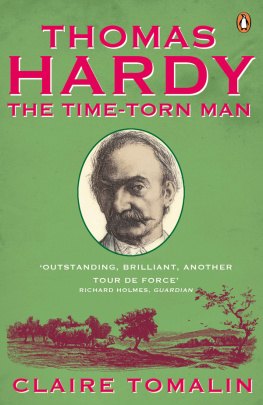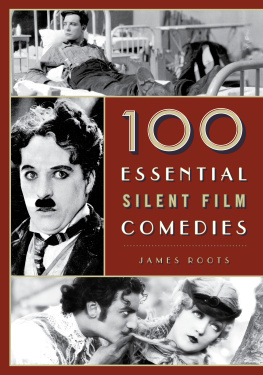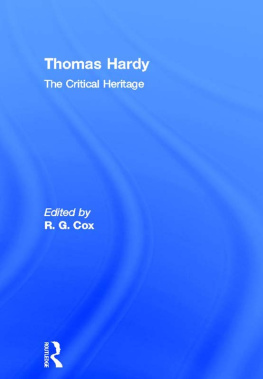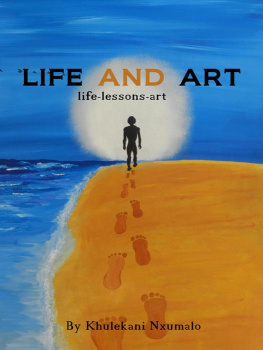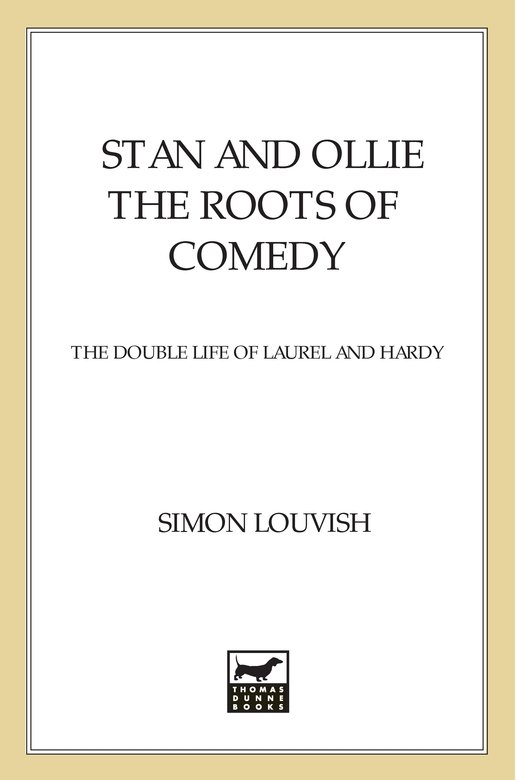Plaudits and thanks to all those who have helped to make this book happen: first and foremost the gurus of Stan and Ollie studies: Randy Skretvedt in sunny California; Leo Brooks in Texas; Rob (Solo) Stone in Los Angeles and his London counterpart, David Wyatt; A. J. Marriot in wildest England, master of the early life of Stan Laurel. All have given of their time and energy and enabled access to their archives. Thanks also as ever to Glenn Mitchell, master of the A-to-Zs of classic film comedy, who has been kind enough to fact-check this tome. Any remaining errors are, of course, my own responsibility, as are my speculations, interpretations and analyses of Stan and Ollies art and lives, in particular my comments on marital matters, concerning which Glenn wishes to demur from my excessive fondness for old news cuttings. Genuflections to the usual suspects in archival nirvanas: Rod Bladel and staff at New York Public Library of the Performing Arts; staff of the Special Collections of the Margaret Herrick Library at the Academy of Motion Picture Arts and Sciences in Los Angeles; Ned Comstock of the University of Southern California; Geraldine Duclow and staff of the Theater Collection of the Free Library of Philadelphia; staff at the British Film Institute Library and Westminster Reference Library; staff at the British Librarys Manuscript Division. David Rothman, Genealogist First Class of California, once again dug and delved for nuggets. Thanks also to Marion Grave and staff at the Laurel and Hardy Museum in Ulverston, and to the good people of Harlem, Georgia: Dave Carlsen and family for their hospitality, and the organizers of the annual Oliver Hardy Day. Special thanks to Charles Lord of Grovetown and Marshall Williams of Madison, Georgia, graceful guardians of the local lore. Thanks too to Anthony Slide, Armond Fields, John Cooper, Rick Mitz, Walter Donohue, Richard Kelly and staff at Faber and Faber, who have endured my Why dont you do something to help me? for far longer than should be humanly necessary. And yet again luv to Mairi, whose tolerance for the Cuckoo song and other comical clangs and clamours has been tested far beyond the bounds of duty.
Going Bye Bye
The Church of the Hills in Glendale, on 27 February 1965, must have looked like a house full of live ghosts. Buster Keaton was there, and Andy Clyde and Clyde Cook, and the studioless Hal Roach, and Roach stalwarts Patsy Kelly and Babe London. Joe Rock and Leo McCarey stood by as the second half of the grand act was eulogized. The halls of Heaven must be ringing with divine laughter, said Dick Van Dyke.
Others had already departed. Jimmy Finlayson died on 9 October 1953, also of a heart attack. He lived alone, but breakfasted every morning with an old friend, actress Stephanie Insall, at her home. When he didnt arrive one morning she called, to find him dead. A fellow Mason, his funeral rites were held at the same Masonic Chapel as Oliver Hardys. Old stalwarts Mack Sennett, Billy Bevan, Hank Mann and Snub Pollard were on hand to say farewell to Fin. Of them, only veteran Keystone Kopper Hank Mann was alive at Stan Laurels death. Hank outlived Stan by six years.
Jimmy Aubrey, the oldest of all the old-timers, born in 1887, lived on till 1984. Billy Bletcher, another great survivor, of Vim vintage, died, aged eighty-five, in 1979. Of the ladies, Dorothy Coburn, who made Babe fall in the mud hole in Putting Pants on Philip, and Anita Garvin, peerless at chasing a cherry round a plate, were long lived, the former checking out aged seventy-two, the latter handing in her plate at the ripe age of eighty-eight in 1994. Billy Gilbert died of a stroke aged seventy-eight in 1971. Charlie Hall had preceded Stan, departing in 1959. Edgar Kennedy had bowed out even earlier, aged fifty-eight, in 1948. Tiny Sandford, the cop with the triple takes and the useless notebook in Big Business, checked out in 1961. Charlie Rogers succumbed to a traffic accident in Los Angeles in 1960. Leo McCarey survived Stan by four years. Joe Rock died in 1984.
Of all the survivors, Hal Roach was the most stubborn. Like Adolph Zukor, the Hollywood pioneer who clung to the vital forceuntil 1976, aged a hundred and three, Roach battled on, to have many a last word. When the press announced that Roach had died, aged one century, in 1992, it might equally have proclaimed, Hal Roach Resumes Production, or Hal Roach Set to Break New Flight Record. The man who had started out driving trucks in Alaska in the kind of environment Charlie Chaplin was to lampoon in The Gold Rush had survived almost to the threshold of the twenty-first century, to the brink of the Internet age. He was single-minded, ambitious, politically naive, but in tune with the mass audiences hunger for comedy. His was, indeed, a fabulous life, in the course of which he had created a consistent world, a comic legacy that has not been surpassed.
As for the personal partners:
Lucille Hardy remarried, to a retired business man, Ben Price, and lived on until 1986. Myrtle Hardy, despite her continued alcoholic condition, survived to the age of eighty-six, and gave up the ghost in 1983. Of Madelyn Hardys date of death we have no verifiable record, as she faded out of the tale with her plaintive telegrams of the late 1930s.
Virginia Ruth Laurel appears to have remarried three times since her marriages to Stan Laurel, hitching up with Messrs Block, Gates and White (consecutively); the last named signed on in 1960. She died in 1976, Stans daughter Lois remaining close to her to the end. According to John McCabe, Mae Dahlberg, still calling herself Laurel, died at the Sayville Nursing Home in New York State in 1969. A year earlier, he had interviewed her and received the tale of the laurel leaves of Scipio Africanus. Thats how he got his name, she insisted. It was that simple.
Sic transit gloria mundi.
Ida Kitaeva Laurel died in 1980, aged eighty-two. She had continued living in the Oceana apartment in Santa Monica, standing guard over Stans memory.
Stans first wife, Lois, was the last to depart, at the age of ninety-four, in 1990. She was resident with her daughter at the time.
The merry-making Illianas fate is less certain. Where she went, whom she married, divorced, remarried, drove crazy, remains outside our tale. A San Francisco death certificate records the decease of a Vera I. Ivanova on 7 February 1994. Her birth is noted as 6 November 1897, which would make her just over ninety-six yearsof age, another strange affirmation (which might have delighted W. C. Fields) of the preservative powers of alcohol.
And so they have all departed, both stars and supporting cast, leaving behind the usual jigsaw puzzle of memories, oral and inscribed. But beyond the memories there are the works, the living art of the movies, which the actors, technicians and producers churned out for fun and profit. Just two-reelers, Stan Laurel insisted, and a dash of feature films, made in the exigencies of ongoing business. At most, he would concede, a craft.

